|
June 1935 Short Wave Craft
 [Table
of Contents] [Table
of Contents]
Wax nostalgic about and learn from the history of early electronics. See articles
from Short Wave Craft,
published 1930 - 1936. All copyrights hereby acknowledged.
|
Almost certainly the earliest
observed evidence of the existence of an ionosphere as part of the Earth's atmosphere
is aurora activity. Alley Oop,
B.C., and friends had no
idea that the wavering colors were the result of high energy, charged particles
from our sun interacting at altitude with the Earth's magnetic field. This article
from a 1935 issue of Short Wave Craft magazine gives a nice introduction to what was known
of the ionosphere at the time, which wasn't a whole lot since no in situ measurements
had yet been made via sounding balloon or rocket. All that was known was inferred
from the behavior of radio waves as they were affected by the charged space. It
wasn't until 1926 that Scottish physicist Robert Watson-Watt coined the term "ionosphere."
Although not mentioned here, it was amateur radio operators who first discovered
the ability of the ionosphere to reflect and bend short wave radio waves to enable
round-the-world communications. Ironically - or perhaps expectedly - the U.S. Congress
in 1912 passed the Radio Act of 1912 that restricted amateur radio operation to frequencies
above 1.5 MHz (a wavelength of 200 meters or less). Shortly thereafter, the FCC
reclaimed much of the spectrum for itself.
The Ionosphere - Where Short Waves Are Reflected
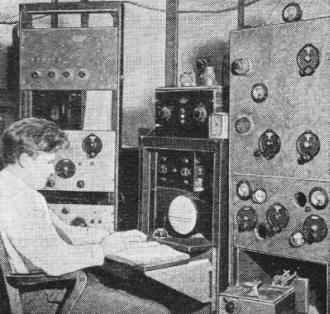 By W. M. Goodall* By W. M. Goodall*
At one time it was thought that there were
two general ionized regions, an upper and a lower. As a result of recent researches
it is now known that the ionosphere is composed of at least five, and possibly more,
reflecting regions, the heights of which are not constant and may even shift relative
to each other.
When you pick up your telephone and talk with a friend in Europe, South America,
or Hawaii, the radio waves commonly employed to carry your voice do not cling to
the earth in their journey, but reach their destination-after being reflected from
some point high in the atmosphere. For short-wave transmission, it has been known
for some time that as the receiver is moved away from the transmitter, the received
signal becomes weaker and at a comparatively short distance - from 50 to 100 miles
- disappears entirely into the background of noise. As the distance is further increased,
however, the signal will reappear, and become strong. This phenomenon is known as
the "skip" effect. Its observation led to the inference that short-wave signals
are returned to the earth at great distances from the transmitter by being reflected
from some of the upper layers of the atmosphere. Without such a reflecting region,
long-distance radio communication by short waves would be impossible. It is obviously
desirable to have as sound a knowledge as possible, both of the physical nature
of this region and of the method by which radio waves are propagated through it.
With this in view, experiments have been carried on for some time by J. P. Schafer
and the writer at the Deal Laboratory.
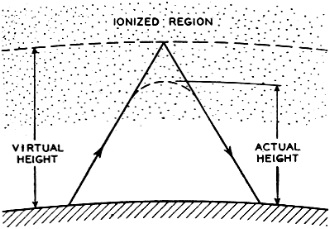
Fig. 1 - Radio waves are not reflected as light from the
surface of a mirror, but in effect curve around at a decreased velocity.
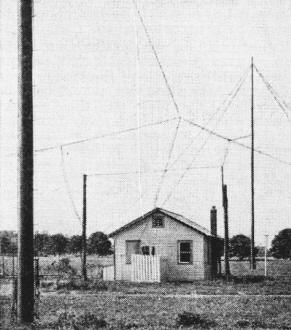
Fig. 2 - Ionosphere measurements are made in a small building
with transmitting and receiving antennas stretched above it.
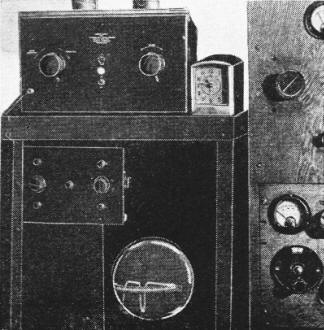
Fig. 3 - A pattern on a cathode ray tube furnishes the necessary
data for calculating virtual heights.
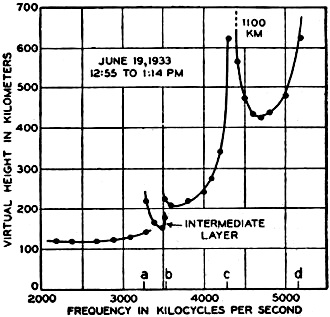
Fig. 4 - A plot of virtual height against frequency showing
at least three critical frequencies.
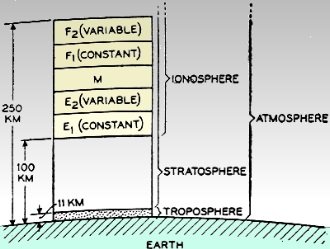
Fig. 5 - Positions of various ionized regions in the upper
atmosphere.
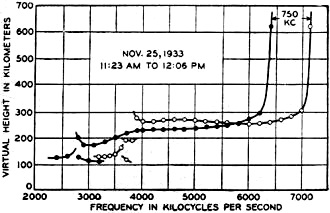
Fig. 6 - Virtual height and frequency plot for two components
of reflected wave.
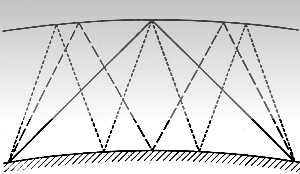
Fig. 7 - Possible multiple paths for radio transmission.
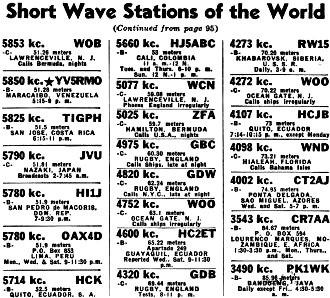
Short Wave Stations of the World.
Early in 1882, Balfour Stewart had suggested the existence of a conducting layer
high in the atmosphere to explain variations in the magnetic field of the earth.
In 1902, Kennelly and Heaviside had independently also used the assumption of a
conducting layer to provide a mechanism capable of reflecting radio waves. In spite
of these early suggestions, however, it was not until the last decade that experiments
had been carried out which were sufficiently direct to satisfy the few who held
to the bitter end that a conducting layer is an unnecessary assumption. Today, however,
no one questions its existence. The evidence admits of no other interpretation.
Present-day knowledge of conductivity in gases suggests that this conducting
layer is an ionized region of the atmosphere. Ultra-violet light from the sun is,
under favorable conditions, a powerful ionizing agency, and might well produce these
ionized regions. From measurements made by the Laboratories during a recent solar
eclipse, moreover, it appears that the sun is largely responsible for ionization
in at least two of the reflecting regions of the upper atmosphere.
The atmosphere surrounding the earth may be divided into two or more layers.
The lower of these, extending upward to about eleven kilometers above the earth,
is known as the troposphere. In this region clouds form and temperature decreases
in proportion to altitude. In the region above this level, called the stratosphere,
the temperature does not vary with altitude and cloud formations of the type found
in the troposphere never appear. It is in a still higher region that radio waves
are reflected, and it has been suggested that this latter region be called the ionosphere,
a name that was derived from its most important attribute - ionization.
A convenient method of studying the ionosphere is to measure the time required
for a radio signal to travel to the reflecting layer and back to the earth. Knowing
the velocity of the waves, one can easily compute the distance to the point of reflection
from the total elapsed time, much as the distance to a mountain could be calculated
by timing the return of a sound echo. With radio waves, however, an uncertainty
enters because the reflection does not occur sharply at a plane. The wave penetrates
the ionized region for some distance and in this region its velocity is reduced.
Because of this, two heights are referred to - the virtual height and the actual
height. Virtual height is that calculated on the assumption that the radio wave
travels with the velocity of light to the reflecting plane where it is sharply reflected
and returns at the same velocity. Actual height is that of the highest point the
wave reaches. The situation is suggested diagrammatically in Figure 1. When the
virtual height is independent of frequency for a considerable range of frequencies,
the virtual height is probably not greatly different from the actual height. When
virtual height changes with frequency; it may be several times the actual height.
0nly the virtual height can be measured directly, but from plots of virtual height
against frequency together with certain reasonable assumptions, it is possible to
estimate ionic density of the different reflecting regions and to make approximate
,estimates of the actual heights.
For measuring virtual heights a radio transmitter and receiver are mounted side
by side so as to be controlled by a single operator. The arrangement is shown in
the photograph at the head of this article. Transmitting and receiving antennas
are located above the small building housing the testing apparatus, as shown in
figure 2. Short pulses are sent out from the transmitter at the rate of sixty per
second, which travel up to the reflecting layer and back to the ground. The receiver
picks up both the direct and the reflected signal, and the time displacement of
the two is a measure of the virtual height of the reflecting layer.
The output of the receiver is connected to one pair of deflecting plates of a
cathode ray tube, while the other pair of deflecting plates is connected to the
sixty-cycle source that controls the rate of emission of the transmitted pulses.
When no signals are being sent out, the pattern on the cathode ray tube is a horizontal
straight line caused by the electron stream sweeping back and forth across the tube
sixty times a second. When pulses are being transmitted, the motion of the electron
stream across the tube will be deflected vertically twice or more each trip - once
for the direct pulse picked up and once or more for the reflected pulses. The appearance
of such a pattern is shown in Figure 3. The time of sending the pulse relative to
the sixty-cycle-current can be adjusted, and is usually chosen to bring the first
or direct received pulse near the left edge of the tube and at the zero of the small
scale fastened on the front of the tube. The position of the second or reflected
pulse can then be read directly from this scale. Since the receiving antenna is
immediately adjacent to the transmitter, the direct signals are much stronger than
the reflected ones, If the gain of the receiver is increased until the reflected
signal produces a satisfactory deflection; however, the overloading effect limits
the amplitude of the direct pulse to a satisfactory value.
An extremely useful method of studying the structure of the ionosphere is to
measure the virtual height as a function of frequency. To secure such data, the
frequency is changed so rapidly that the condition of ionization remains essentially
constant during the experiment. A plot of one such set of measurements is shown
in Fig. 4 above. The significant feature of the relationship shown is that
the virtual height remains essentially constant for a range of frequencies and then
suddenly increases. Beyond these critical frequencies the virtual height rapidly
decreases, but always to a value higher than that found below the critical frequency.
The critical frequency is that at which the lower reflecting layer is completely
penetrated, and the virtual height beyond the critical frequency is that of the
next higher layer. The large virtual height obtained at the critical frequency is
not due to a greater penetration but to a decrease in velocity of travel through
the penetrated layer at the critical frequency. From such sets of measurements it
becomes evident that there is more than one reflecting layer in the ionosphere.
At one time it was thought that there were two general ionized regions, an upper
and a lower, designated the F and the E respectively. As a result of studies made
by the Laboratories, however, it is now known that the ionosphere is composed of
at least five, and possibly more, reflecting regions. Their heights are not constant
and may even shift relative to each other, but a typical indication of their arrangement
is shown in Figure 5. The various regions differ not only in their heights but in
the manner in which their ionization varies.
In regions E1 and F1 the ionization throughout the day
varies uniformly with time in a manner that would be expected if the ionizing agent
were the sun. The same cycle of ionic density repeats itself day after day, attaining
a maximum shortly after noon. Tests made during the solar eclipse a few years ago
indicate strongly that ultra-violet light from the sun is the ionizing agency. In
the other regions, the ionization varies in an erratic manner from day to day and
even from hour to hour. During winter the ionic density in the F2 region
may change as much as fifty per cent in from 15 to 30 minutes. The maximum for this
region usually occurs about noon in winter and about sunset in summer. The ionization
of the M region sometimes varies in a constant manner, as does that of the E1
and F1 regions, and sometimes varies erratically from hour to hour.
Because of this variation in ionic density, it is not always possible to find
all the regions at the same time. If, for example, the ionic density of the E2
region should be greater than that of any higher regions, signals that completely
penetrated the E2 layer would not be returned to the earth, giving no
indication of the existence of higher levels. In general a signal that completely
penetrates one layer will be reflected only by a layer of higher density.
Besides this complexity of reflecting regions, there is an additional complication
caused by the effect of the earth's magnetic field. In such a field the signal is
split into two components, each of which in general is reflected at a different
virtual height and has a different critical frequency. This is indicated in Figure
6, where one component is indicated by black dots and the other by circles.
The effects described so far are detected when the transmitter and receiver are
side by side, and the signal is transmitted up and back vertically. When the receiver
is at a considerable distance from the transmitter, however, the reflection phenomena
are further complicated by there being a number of paths which use different parts
of the ionosphere for reflection as shown in Figure 7. When it is remembered that
the reflection along all of these paths encounters the diversity of reflecting regions
and the splitting effect of the magnetic field already described, it becomes apparent
that the transmission of short waves must be a very complicated process. Fundamental
studies of the elements of this type of propagation should contribute materially
to the improvements in long-distance radio transmission which the next few years
should bring forth. -Bell Laboratories Record.
* Radio Research, Bell Telephone Laboratories.
Posted September 22, 2022
(updated from original post
on 2/16/2017)
|

















